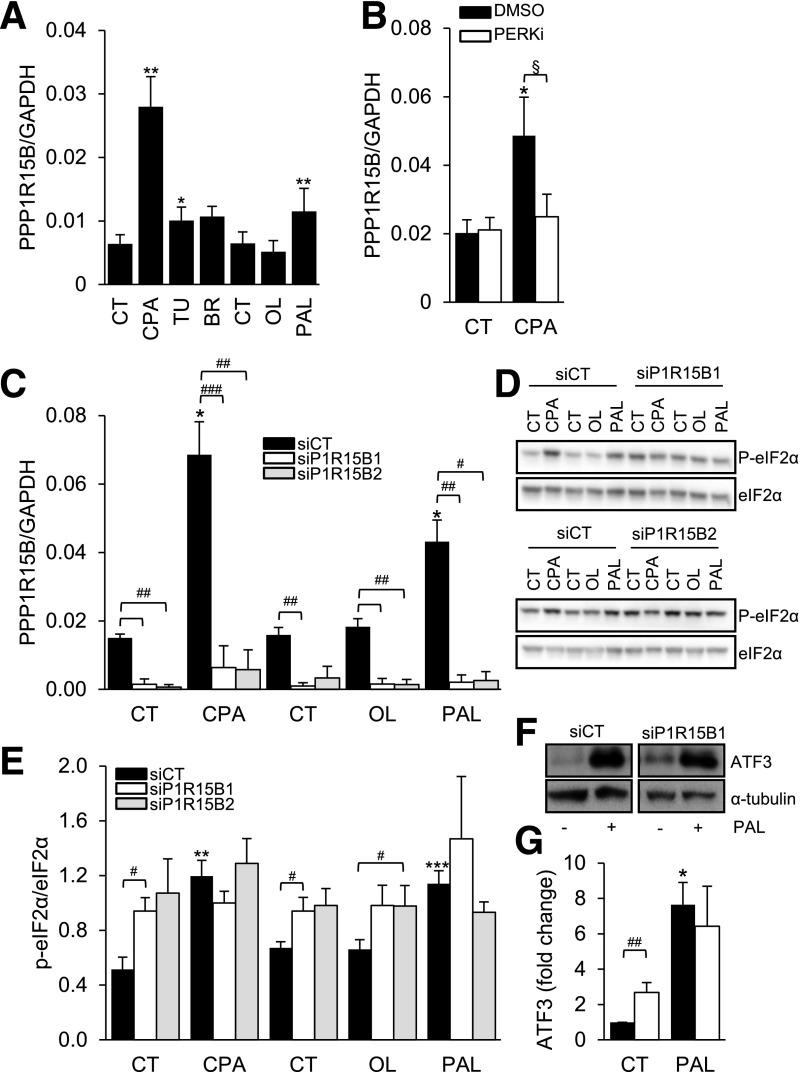Figure 4.
PPP1R15B is induced by ER stress in β-cells in a PERK-dependent manner, and PPP1R15B silencing induces eIF2α phosphorylation and ATF3 in β-cells. A: INS-1E cells were exposed to the chemical ER stressors CPA, tunicamycin (TU), or brefeldin A (BR) or to the FFAs oleate (OL) or palmitate (PAL) for 24 h (n = 5–6). B: INS-1E cells were exposed or not (CT) to CPA in the presence or absence of the PERK inhibitor GSK2606414 (PERKi). PPP1R15B mRNA expression was examined by real-time PCR and normalized to the reference gene GAPDH. C: INS-1E cells were transfected with control siRNA (siCT) or two different siRNAs targeting PPP1R15B (P1R15B1 and P1R15B2). After a 48-h transfection, the cells were treated for 16 h with CPA, OL, or PAL. PPP1R15B mRNA expression was examined by real-time PCR and normalized to the reference gene GAPDH (n = 4). eIF2α phosphorylation (P-eIF2α) (D and E) and ATF3 (F and G) expression were examined by Western blot. D and F are representative images of n = 4. E and G represent densitometric quantifications of D and F, respectively. P-eIF2α was corrected for total eIF2α. ATF3 expression was corrected for α-tubulin and expressed as fold of CT. Data are presented as means ± SE. *treated vs. control, §DMSO vs. PERKi, #siP1R15B vs. siCT by two-sided Student paired t test. *,§,#P < 0.05; **,##P < 0.01; ***,###P < 0.001.

